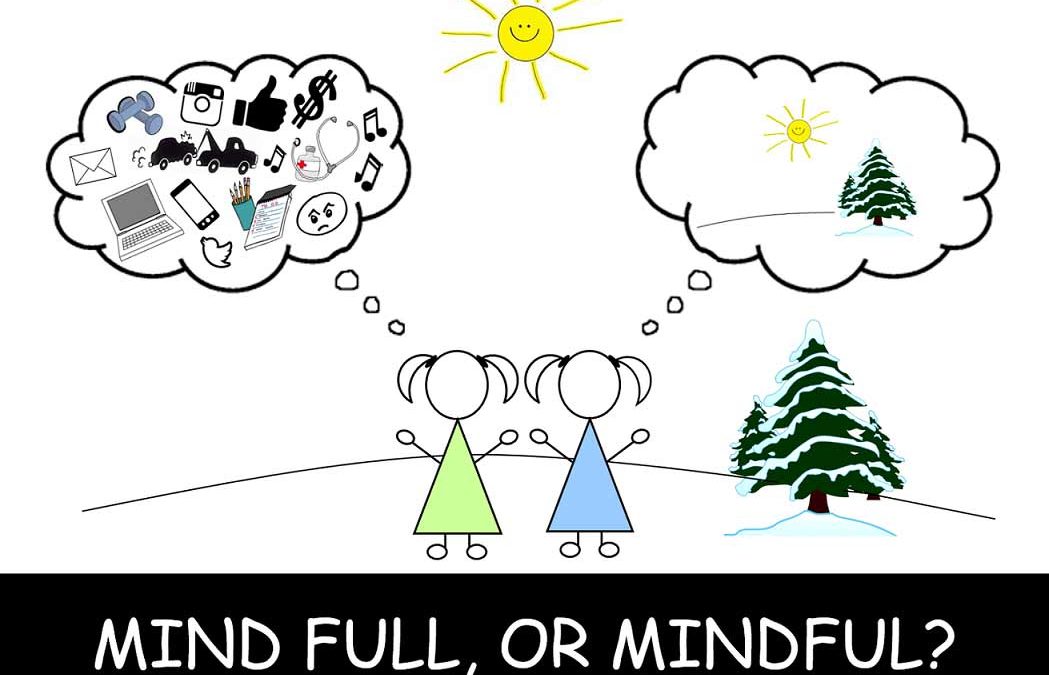Mindfulness takes on a couple of different forms. One aspect is being aware of what is going on in your mind, your thoughts and your focus. For many of us, we are not really plugged into what we are thinking, we just run on automatic pilot allowing our train of thought to run rampant.
When we connect to our thoughts and really become aware of our focus we are being mindful. This is important because we can begin to connect our thoughts to our feelings. All of our emotions are the result of what we have been thinking. When we realize we don’t like how we are feeling it is beneficial to tap into what we have been focused on and thinking, if it is a negative or a fear-based, worrisome thought, it will always result in an unpleasant feeling. On the other hand, we experience pleasant emotions when we think about positive and uplifting subjects. As well as applying a specific meaning to a situation that creates a feeling of hopefulness, trusting that everything will turn out okay.
When we practice this form of mindfulness, awareness is created that helps us to be more directive of what we choose to think about. We can be in charge of what we are thinking and how we are perceiving circumstances. Or redirecting the focus to help improve how we are feeling.
Mindfulness also means being connected to the moment, grounding the focus in the here and now, for example getting in touch with your breathing and following the inhale and exhale of the breath. Or being aware of the environment: hearing the clock ticking, or listening to the traffic, feeling the furniture beneath your body, looking at an object and truly being aware of what is going on around you.
When we do this, we aren’t connected to what is going on in our mind at all, but it is still considered mindfulness. This is a helpful practice because it can give us a break from being stuck in our head and over thinking things. Often this approach to mindfulness is easier than the previous meaning, because redirecting the focus and being in touch with what is in front of you instead of shifting the thinking to something better, can be the path of least resistance. In other words, our mind may be more receptive and ready to be in the moment, instead of being told to stop thinking a particular thought or shifting to a new perspective.
Meditation is linked to mindfulness. Typically just prior to meditating an intention is set that identifies an anchor. An anchor is something that our mind is going to focus on, most commonly the breath, but it can also be a word or phrase or mantra that is repeated, not out loud, but quietly inside the mind. An alternative anchor may be an image, perhaps thinking about or visualizing a beam of light or a sunset, or actually staring at the flame of a candle sitting in front of you. Using an anchor gives our mind a place to return to when we realize the mind has drifted off to thinking about something else.
Being distracted by a thought or multiple thoughts coming into our meditative experience is to be expected. Part of the meditation process is gently redirecting our focus back to the anchor, over and over again.
Both forms of mindfulness are incorporated into meditation. We become mindful of our thoughts when we are no longer focused on the anchor, and focusing on the anchor is also mindfulness because it is connecting us to the present moment.
Mindfulness is a simple concept, but not an easy one. It takes daily practice. It eventually trains us to be more aware of what is going on around us and also what is going on inside the mind. It helps us to be more intentional with our focus and our thinking, which helps us to choose a better feeling pattern of thought, which then creates a better feeling state of emotional well-being.
Inspired Flow teaches meditation and mindfulness either as a part of counseling or via class instruction to an individual or group. For additional information check out www.inspiredflow.net/meditation/.

